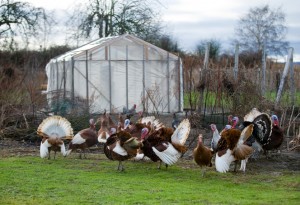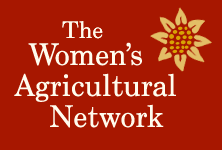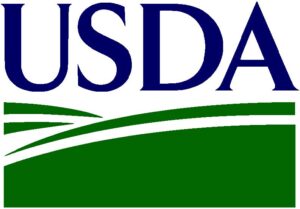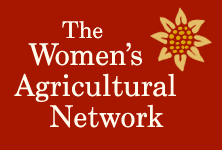 As we enter the holiday season, and the final days of another year, it seems inevitable that we take time to assess where we are in relation to where we hope to be. The following article was written before the economic collapse but I think you’ll see that it is as relevant today as it was at the time. I hope it provides some food for thought.
As we enter the holiday season, and the final days of another year, it seems inevitable that we take time to assess where we are in relation to where we hope to be. The following article was written before the economic collapse but I think you’ll see that it is as relevant today as it was at the time. I hope it provides some food for thought.
Happy Thanksgiving to all!!
This article by John Ikerd was originally published in 2004, this excerpt reprinted with permission from a longer essay of the same name.
Happiness always has been a matter of discussion and debate among the world’s greatest philosophers. It was accepted as the motive of all purposeful human activity. The “hedonists” philosophers equated happiness to sensual pleasures – to individual, personal experiences. Another group of philosophers, including Aristotle, used the term eudaimonia for happiness. Eudaimonia is inherently social in nature – it is realized by the individual, but only within the context of family, friendships, community, and society. Aristotle’s happiness, social happiness, is a natural consequence of positive personal relationships. This “social happiness” was considered to be a “by-product” of actions taken for their own sake – not to achieve some sensory satisfaction, but because they are “intrinsically good.” In essence, Aristotle and his followers believed that happiness was not something to be pursued, but instead, was a natural consequence of “righteous living.”
To the extent that contemporary economics includes any remaining element of happiness, it most clearly is “hedonistic” in nature rather than eudaimonic. Eudaimonia depends on “personal relationships,” not on some “impersonal altruism.” Thus, the current pursuit of economic wealth is a pursuit of individual, hedonistic or selfish sensory pleasure. And, pursuit of individual wealth, within this context, inevitably leads to the exploitation of other people and the degradation of human relationships. Thus, the pursuit of “individual wealth” quite logically has diminished our “social happiness.”
What hard evidence do we have of this perverse relationship between wealth and happiness? We need only look at trends such as the rising cost of law enforcement and increasing numbers of prisoners, increasing number of lawyers and rising costs of civil litigation, increasing births to unwed mothers and rising poverty in single-parent households. All of these trends are symptoms of increasingly dysfunctional human relationships and declining social happiness, and all have occurred during a time of rising national wealth.
Robert Putnam, a Harvard Political Scientist, clearly documents our growing social disconnectedness in his book, Bowling Alone. He evaluates a multitude of measures of social involvement, ranging from voting in elections, to belonging to civic and professional organizations, to joining bowling leagues, to visiting friends and neighbors. He concludes that Americans are only about 30 to 50 percent as socially connected today as we were in the late 1950s.
As Aristotle might have predicted, our growing disconnectedness occurred as America was abandoning all social and moral constraints to pursue individual wealth and the promotion of maximum economic growth. During the early part of the twentieth century, Americans tempered their economic ambitions with concern for their fellow citizens. They restrained corporate greed at the turn of the century by supporting strong antitrust legislation. They supported Roosevelt’s New Deal programs to care for the needy and help lift the nation out of recession. Most supported the Civil Rights movement of the 1960s. But, since the 1960s, there has been little societal or political restraint to the unbridled pursuit of individual economic self-interests.
Aristotle might also have the predicted the consequences for our national happiness. Between the late 1970s and late 1990s, surveys indicate that each new generation, on average, is “unhappier” than the previous generation. In short, as each generation has become increasingly disconnected, the nation as a whole has become increasingly mentally ill and physically miserable. As we have become a nation of greater wealth, we have become a nation of growing unhappiness.
In farming, the pursuit of wealth is seen in a relentless trend toward larger, more specialized, farming operations, as farmers are encouraged to give priority to productivity and profitability – to farm for the bottom line. The bottom line has encouraged farms to grow larger, which is possible only by farmers acquiring land from their neighbors. Such hopes are hardly conducive to building strong relationships among neighbors. As families have been forced out of farming, they have left many rural communities in decline and decay, without enough people to support local schools, churches, health care facilities, or main street businesses.
The pursuit of unbridled economic self-interest has turned farms into “factories,” pitting neighbor against neighbor. For example, producers and community leaders, expecting profits and tax revenue from large-scale confinement animal feeding operations, are confronted by community members who live downwind or downstream, who suffer from the inevitable pollution of air and water. The social fabric of many rural communities has been split apart by such conflicts. Eventually, the corporate operations will leave these communities, when profit prospects look better elsewhere, leaving a splintered community with the mess to clean up.
So, how are we to find happiness? First, we must have the courage to challenge conventional economic thinking that “pursuit of wealth” means “pursuit of happiness.” Next, we must realize that happiness, in any sense other than hedonistic sensory pleasure, depends on the quality of our personal relationships. Finally, we must understand that happiness is a “by product” of “right living” – not something that we pursue, but instead something that comes to us.
What does this have to do with sustainable farming? Everything. Sustainable farming is not about becoming wealthy, but instead, it is about living a good life. As farmers find ways to make a decent living, while caring for the land and caring for other people, not only are they building a sustainable agriculture for the future, they are opening the doors to happiness.










